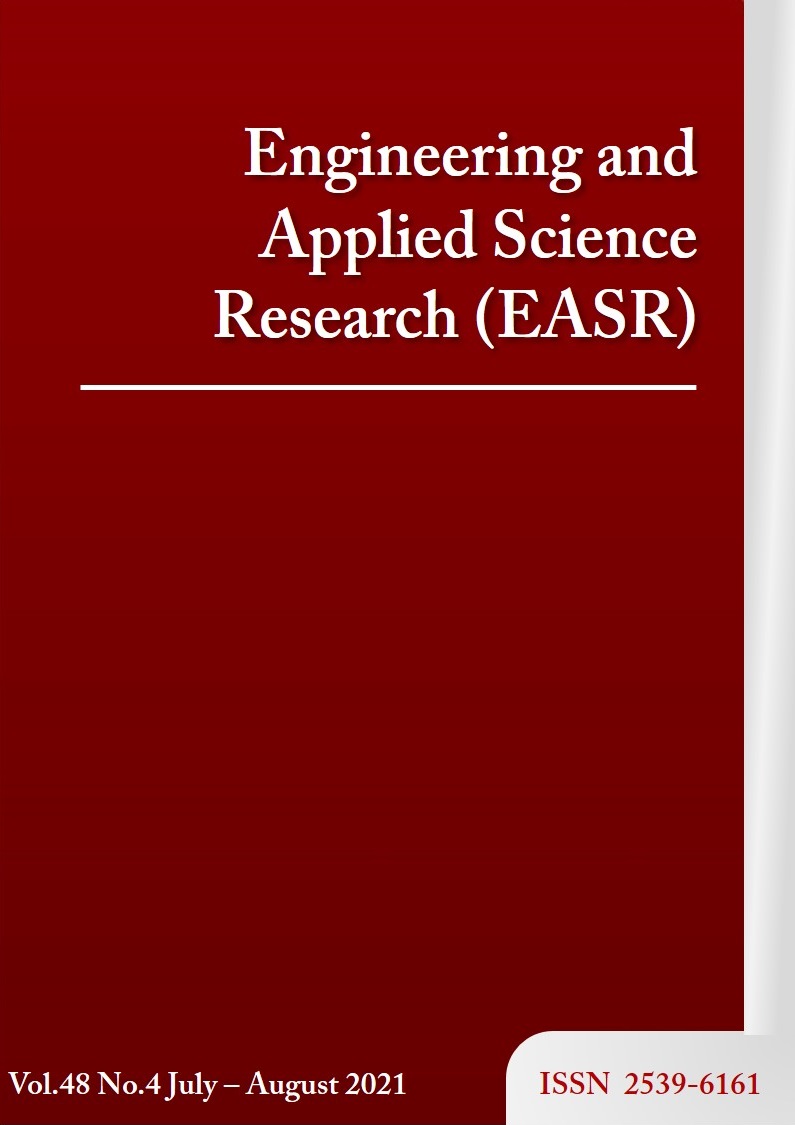Predictive models for the number of cumulative cases for spreading coronavirus disease 2019 in the world
Main Article Content
Abstract
The coronavirus disease outbreak in 2019 (COVID-19) has caused major economic and healthcare problems worldwide. At this time, the worldwide outbreak has passed its peak, while the greatest number of cases has been in the USA, Brazil, and India. Measures and policies for controlling the outbreak have been developed by authorities to protect the population of each country, and forecasting the number of infectious people is an important factor for developing them. This research was conducted to identify a suitable forecasting model for estimating the cumulative daily number of infectious people worldwide. Sample countries with severe outbreaks were selected from each continent. Herein, forecasting models based on logistic, Richards, and Gompertz growth curves are derived and their suitability for forecasting the COVID-19 rates in each sample country and worldwide are analyzed. Moreover, estimating the growth curve parameters is based on the least-squares method. The results show that the Gompert growth curve is the most suitable for estimating the cumulative number of infectious people worldwide.
Article Details
This work is licensed under a Creative Commons Attribution-NonCommercial-NoDerivatives 4.0 International License.
References
Li Y, Liang M, Yin X, Liu X, Hao M, Hu Z, et al. COVID-19 epidemic outside China: 34 founders and exponential growth. J Investig Med. 2020:1-4.
Maier BF, Brockmann D. Effective containment explains sub-exponential growth in confirmed cases of recent COVID-19 outbreak in mainland china. arXiv:2002.07572. 2020:1-9.
Amaral MTR, Katiane SC, Marinho GA, Carlos RP. Generalized growth curve model for COVID-19 in Brazilian states. Revista Brasileira de Biometria. 2020;38:125-46.
Kucharavy D, Roland DG. Application of logistic growth curve. Procedia Eng. 2015;131:280-90.
Vaghi C, Rodallec A, Fanciullino R, Ciccolini J, Mochel JP, Mastri M, et al. Population modeling of tumor growth curves and the reduced Gompertz model improve prediction of the age of experimental tumors. PLoS Comput Biol. 2020;16:1-24.
Eberhardt LL, Breiwick JM. Models for population growth curves. Int Sch Res Not. 2012;2012:1-7.
Yoshitaka H. Calculation of population parameters using Richards function and application of indices of growth and seed vigor to rice plants. Plant Prod Sci. 1999:129-35.
Li-Qun J. Analysis of a modified logistic model for describing the growth of durable customer goods in China. Math Comput Appl. 2013;18:30-7.
Ersoy IE, Mendes M, Keskin S. Estimation of parameters of linear and nonlinear growth curve models at early growth stage in California Turkeys. Eur Poultry Sci. 2007;71:175-80.
Verhulst PF. Notice sur la loi que la population suit dans son accroissement. Math Phys. 1838;1838:113-21.
Martha LA, James PB. Introductory Differential Equations. 5th ed. New York: Academic Press; 2018.
Tsoularis A, Wallace J. Analysis of logistic growth models. Math Biosci. 2002;179:21-55.
Worldometer [Internet]. 2020 [cited 2020 May 26]. Available from: https://www.worldometers.info/coronavirus/#countries.
Levenberg K. A method for the solution of certain non-linear problems in least squares. Q J Mech Appl Math. 1994;2:164-8.
Marquardt D. An algorithm for least-squares estimation of nonlinear parameters. SIAM J Appl Math. 1963;11:431-41.



